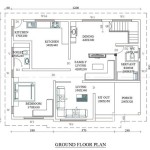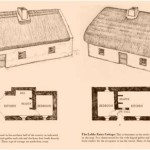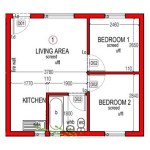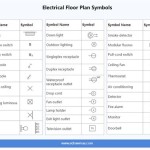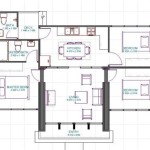Simple Cottage Floor Plans: Designing for Cozy Living
Cottage floor plans evoke a sense of warmth, simplicity, and connection to nature. These designs prioritize comfortable living spaces, often incorporating features that emphasize natural light, open layouts, and a relaxed atmosphere. When considering a simple cottage floor plan, several factors come into play, including the desired size, the number of occupants, and the intended use of the space. Understanding these elements can help in selecting or customizing a plan that perfectly aligns with individual needs and preferences.
The essence of a simple cottage floor plan lies in its efficiency and functionality. Unlike larger, more complex house designs, cottages often prioritize maximizing usable space while minimizing unnecessary square footage. This is particularly important for individuals or families seeking a smaller, more manageable living environment. Furthermore, the focus on simplicity extends to the architectural details, often featuring straightforward lines and a lack of ostentatious ornamentation. This contributes to the overall charm and understated elegance of a cottage design.
Many simple cottage floor plans feature an open-concept design, seamlessly integrating the living room, dining area, and kitchen. This creates a sense of spaciousness and encourages social interaction. Natural light is a key element, with large windows and strategically placed skylights often incorporated to illuminate the interior spaces. This emphasis on natural light enhances the ambiance and contributes to the overall feeling of well-being within the home.
Key Point 1: Understanding Space Requirements and Layout
Before embarking on the process of selecting a simple cottage floor plan, it is crucial to assess individual space requirements. This involves considering the number of bedrooms and bathrooms needed, as well as the size and function of the living areas. For instance, a single individual or couple may find a one-bedroom cottage sufficient, while a small family may require two or three bedrooms. Similarly, the size of the kitchen and living room should be determined based on lifestyle and entertaining habits. Individuals who enjoy cooking and hosting gatherings will likely require a larger kitchen and living area than those who prefer a more minimalist lifestyle.
The layout of a cottage floor plan plays a significant role in its functionality and flow. An efficient layout minimizes wasted space and ensures that the various rooms are easily accessible. Open-concept designs are popular choices for cottages, as they create a sense of spaciousness and facilitate interaction between family members. However, it is important to consider the privacy needs of each occupant when designing an open layout. Incorporating strategically placed walls or partitions can help to define distinct zones within the open space while still maintaining a sense of connection.
Another important consideration is the placement of the bedrooms and bathrooms. Ideally, bedrooms should be located away from the main living areas to ensure privacy and quiet. Bathrooms should be easily accessible from the bedrooms and living areas, and should be adequately sized to accommodate the needs of the occupants. The placement of windows and doors should also be carefully considered to maximize natural light and ventilation.
Accessibility is also a crucial factor to consider, especially for individuals with mobility limitations. Wide doorways, ramps, and grab bars in the bathrooms can make a cottage more accessible and comfortable for individuals of all ages and abilities. Universal design principles can be incorporated into the floor plan to ensure that the cottage is functional and adaptable to changing needs over time.
Key Point 2: Common Features and Design Elements
Simple cottage floor plans often incorporate a variety of features and design elements that contribute to their cozy and inviting atmosphere. Some common features include a fireplace, a front porch, and a garden. A fireplace provides a focal point for the living room and adds warmth and ambiance to the space. A front porch offers a welcoming entry point and provides a space for relaxing and enjoying the outdoors. A garden can enhance the beauty of the cottage and provide a space for growing flowers, vegetables, or herbs.
The architectural style of a cottage can vary depending on personal preferences and the surrounding environment. Some popular cottage styles include English cottages, French country cottages, and Scandinavian-inspired cottages. English cottages typically feature steeply pitched roofs, dormer windows, and exposed brick or stone. French country cottages often incorporate natural materials such as wood and stone, and feature decorative details such as shutters and window boxes. Scandinavian-inspired cottages emphasize simplicity, functionality, and natural light, and often feature clean lines and minimalist décor.
Interior design elements play a crucial role in creating the desired atmosphere within a cottage. Natural materials such as wood, stone, and brick are often used to create a sense of warmth and texture. Soft colors, comfortable furniture, and cozy textiles contribute to the overall feeling of relaxation and comfort. Personal touches such as artwork, photographs, and decorative objects can add personality and character to the space.
Storage is an important consideration in any cottage floor plan, especially in smaller spaces. Built-in shelving, cabinets, and drawers can help to maximize storage space and keep the cottage organized and uncluttered. Utilizing vertical space with high shelves and drawers can also help to optimize storage. Consider incorporating multi-functional furniture such as storage ottomans or sofa beds to maximize space utilization.
Key Point 3: Customizing and Adapting Existing Plans
While many pre-designed simple cottage floor plans are available, it is often necessary to customize or adapt an existing plan to meet specific needs and preferences. This may involve making changes to the layout, adding or removing rooms, or modifying the architectural style. Working with an architect or designer can be helpful in navigating the customization process and ensuring that the final plan meets all requirements.
One common customization is adapting the plan to fit a specific building site. The orientation of the cottage, the slope of the land, and the surrounding vegetation can all influence the design. For example, a cottage built on a sloped lot may require a different foundation design than a cottage built on a flat lot. Similarly, the placement of windows and doors should be carefully considered to maximize natural light and ventilation based on the site's orientation.
Another common customization involves adapting the plan to accommodate specific lifestyle needs. For example, a cottage designed for a retired couple may require different features than a cottage designed for a young family. A retired couple may prioritize features such as a single-story layout, a large master bathroom, and a low-maintenance garden. A young family may prioritize features such as multiple bedrooms, a playroom, and a fenced-in backyard.
Sustainability is an increasingly important consideration when designing a cottage. Integrating energy-efficient features such as solar panels, energy-efficient windows, and insulation can help to reduce energy consumption and lower utility bills. Using sustainable building materials such as recycled wood, bamboo, and reclaimed brick can also minimize the environmental impact of the cottage. Consider incorporating rainwater harvesting systems or greywater recycling systems to conserve water.
Ultimately, the goal of customizing a simple cottage floor plan is to create a home that is both functional and aesthetically pleasing, and that perfectly reflects the individual needs and preferences of the occupants. With careful planning and attention to detail, it is possible to create a cozy and inviting cottage that will provide years of enjoyment.
When considering a simple cottage floor plan, it is important to remember that simplicity does not equate to lack of style or functionality. Well-designed cottage floor plans can offer a comfortable and efficient living space that is both beautiful and practical. By carefully considering individual needs and preferences, and by working with experienced professionals, it is possible to create a cottage home that is both charming and functional.

5 Small And Simple 2 Bedroom House Designs With Floor Plans Design Es Plan

Stylish And Simple Inexpensive House Plans To Build Houseplans Blog Com

Simple Best House Plans And Floor Affordable

Simple House Plans Blog Homeplans Com

Simple Cottage Plan Log Home House Plans Small

Low Budget Simple House Design Plans For Builders Blog Builderhouseplans Com

Stylish And Simple Inexpensive House Plans To Build Houseplans Blog Com

27 Adorable Free Tiny House Floor Plans Craft Mart

Est House Plans To Build Simple With Style Blog Eplans Com

Small House Plans To Build Your Own Home

